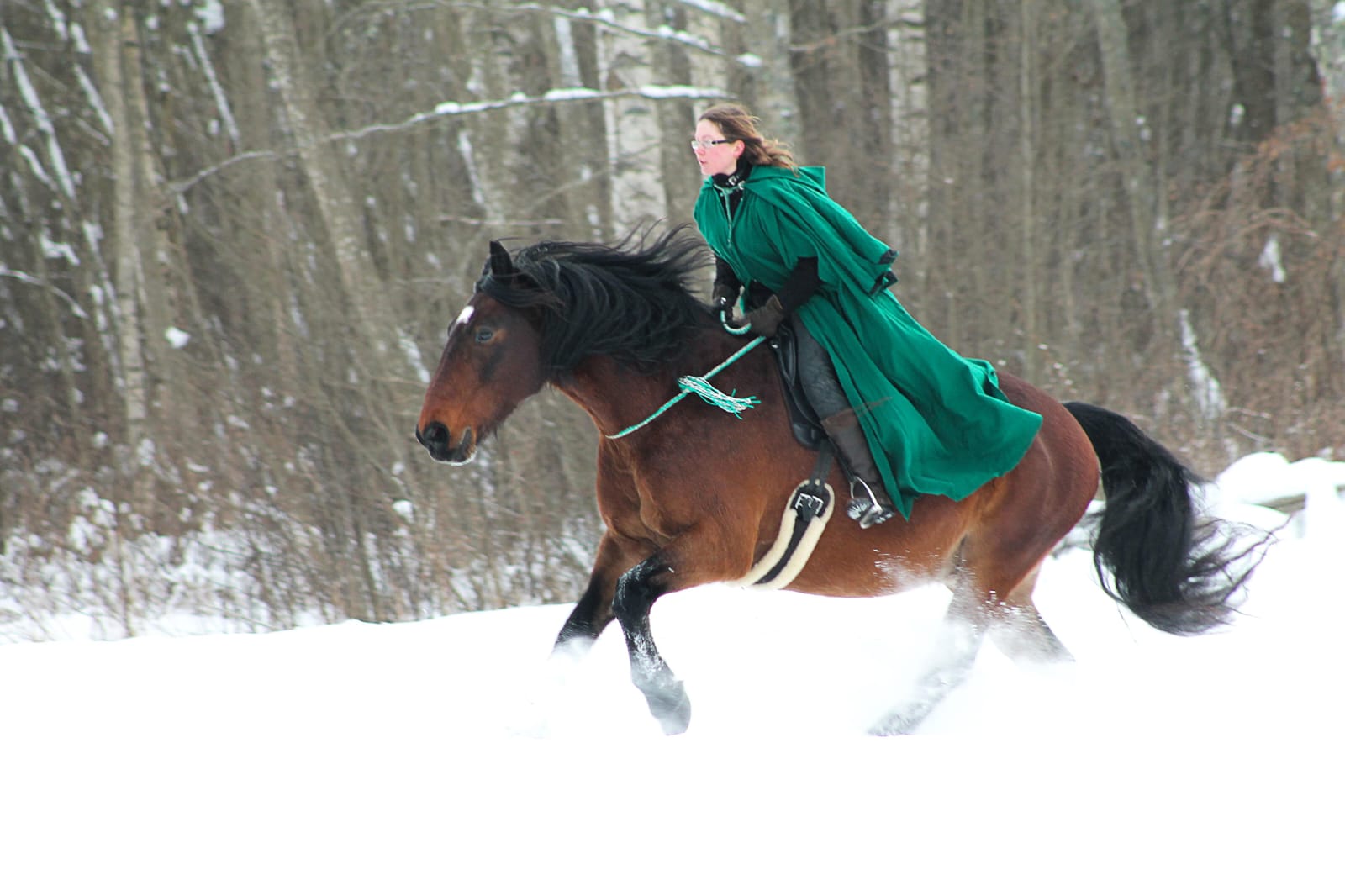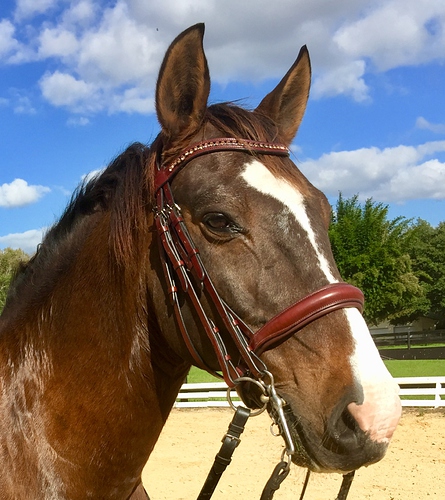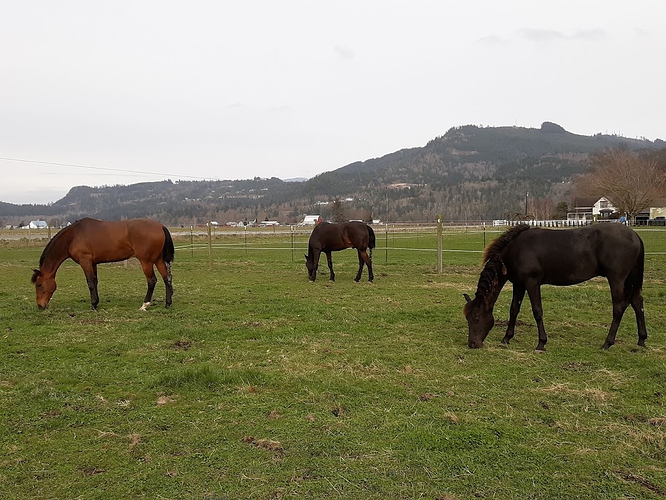I’ve seen probably as many sale ads calling Haflingers “palomino” than calling them sorrel/chestnut. In a world where even some Haflinger owners think their own horses are palomino, what can be done to correct the error? I’ve even seen at least one horse book calling Haflingers palomino.
Sigh.
Bicycles can be the worst! Think it’s because they’re quiet and fast.
They also have to look at the ground, so they don’t always see you.
Our semi-rural private subdivision, with its 10 miles of paved road and no through traffic, is a favorite training ground for road racers, unfortunately. When I’m riding a horse, I stay alert to their presence, and I’ll call out to get them to respond, so my horse realizes the cyclists are humans.
And, historically, early TBs were also “chesnut”. I’m not certain when the modern spelling became standard.
I’ve had people argue that my gelding must be genetically brown, NOT bay, as he gets lighter spots around his muzzle and inner thighs in winter and as his color changes seasonally, not staying perfectly the same all year.
Dunno, seems bay to me. 
Sigh…I just got asked by a customer and a fellow employee what the nutritional difference between whole shelled corn and cracked corn would be.  My brain hurts and I want to cry…
My brain hurts and I want to cry…
What a magnificent picture, the horse is beautiful & bay & your coat is Amazing!
maybe thinking of their misconception as confusing phenotypes rather than knowing genotypes - lets face it, most folks understand what they SEE (phenotype) rather than what they dont see (genotype).
These are my three - bay, brown, and brown. The only one who doesn’t get argued over for color is the bay (Aries). Remy (middle) is registered brown, always referred to by friends as dark bay. Merlyn (right) is registered brown, and I’m always told he’s black (he’s not).
Never had her tested…some people think she’s black and just fades out, I call her brown. Her summer coat always comes in black as black gets, as does her winter coat. Rugged or not rugged, it fades out to brown, and when clipped, she goes quite a mousey brown with at times, a greyish tint.
Top left is new winter coat, top right is end of winter, bottom left is clipped and bottom right is end of summer!
The lack of brown/red/cinnamon/etc at her nose, flanks, and gaskin almost guarantee she’s black.
I had one almost plow right into me when I was on my young horse. She was busy looking at the ground and not where she was going even though her friends were yelling at her that there were horses here. She looks up at the last second and veers away and hits the dirt. Then she gets all pissy with my friend and I and her friends interrupt her with “Hey, were were yelling at you there were horses why didn’t you listen?” Score one for the bike riders
These pictures look just like my mare - I almost thought the top right WAS her! I’ve struggled with what to call her colorwise. Most people call her a dark bay. However, I was recently told by a friend who is well-versed in color genetics that she is “smoky black” because she had a foal who was palomino, and that wouldn’t be possibly if she were a bay. I still just call her a bay to avoid confusion with those who have to handle her!
Just be aware you can’t visually distinguish a smoky black from a regular black, as single cream doesn’t affect black pigment.
What color (allegedly) was the sire? If truly a “plain” color, then yes, the mare had to be smoky black, or even potentially a very dark buckskin depending on other determining factors in her coloring
Good to know! She is a grade Morgan mare who was given to a rescue already pregnant, so I don’t really know her history or what stallions she may have been out with before that. She has similar characteristics to @sweetsalute’s mare: black in the winter and fading to brownish in the summer.
I have been around around 5 horses who were true black for years.
Four of them were TWH, the other a Paso Fino. One of the TWH and the Paso Fino were stallions, therefore not out in the sun as much, but three were mares outside 24/7/365. Two of the black mares did not seem to get groomed much, the other one gets groomed real well regularly. This does not make any difference, all three mares are/were BLACK all over their bodies except for white markings, even at the end of summer.
These horses did not fade. They did not have brown hairs on their muzzles or flanks. Year after year, month after month, their coats were the same color, black.
My brown Paso Fino mare by the black Paso Fino stallion may have looked black just after shedding if one stood far away enough and did not look at her flanks and muzzle closely. After a month or two it was super obvious she was BROWN, not black, not dark bay or brown (her mane and tail were brown.)
Unfortunately many decades ago the powers that be in the American Arabian registry decided that there were no brown Arabians. Now all brown Arabians seem to be registered as blacks, but they are not. My riding teacher’s personal horse is a dark bay or brown Arabian registered as black. It is easy to see this at the end of summer, brown nose, brown flanks unlike the true blacks I’ve known.
My not-so-young pony bolted and knocked her 16 hh QH friend into the bushes to avoid being run into by a cyclist. We saw the cyclist after that and he was very respectful.
Just based on that you can’t say they were black, or not. There’s a difference between the brown of sun-fading, and the brown that exists on a really dark bay (seal brown phenotype) horse.
You have to look at the new Summer and Winter coats, not their sun-faded counterparts.
nd1 also plays a role, and can keep a “true black” horse from having a black phenotype.
“True black” is E?aa (barring other modifiers), regardless of phenotype. Fading or not doesn’t make them any more or less black.



